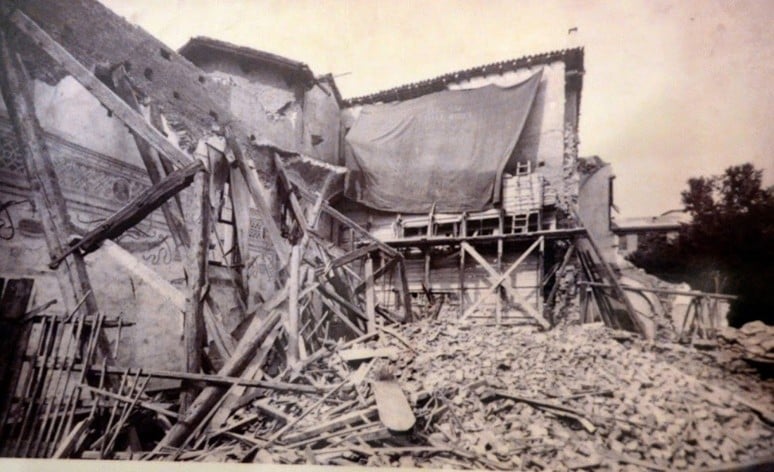

To listen to today’s reflection as a podcast, click here
On August 15, 1943, Allied planes dropped high-explosive bombs on Milan, Italy.
Their goal was to drive Axis forces, loyal to Hitler’s Germany, from their strongholds in the city.
Despite the intentions of Allied pilots to spare, if possible, Milan’s irreplaceable art treasures, a bomb fell within 80 feet of the Convent of Santa Maria della Gracie. The shock wave collapsed the roof, the cloister, and most of the walls.
Art lovers the world over were plunged into despair.
On one of the walls was Leonardo da Vinci’s Last Supper, which – along with da Vinci’s Mona Lisa – was arguably one of the world’s two most famous paintings.
Da Vinci’s masterpiece, which he had painted directly onto the plaster of the convent’s wall in 1495, had always been fragile. Within the first century of its life, its colors had already begun to fade. Humidity issues plagued preservation efforts.
When Napoleon’s troops briefly bunked in the convent, several soldiers used the face of Jesus for target practice. Infamously, soldiers in the same army would later be accused of taking potshots at the nose of Egypt’s Great Sphinx.
Local officials and Monuments Men, leery of the dangers of war in the 1940s, had protected the convent’s wall with sandbags. They had to wait two long years, however, before finding out if their efforts had been in vain.
In August 1945, after all the shells had stopped falling, they began the slow process of peeling back sandbags and scaffolding.
Leonardo’s master work, though seriously shaken, was intact.
Having recently endured novelist Dan Brown’s ludicrous claims in The Da Vinci Code, it’s still around to be cherished by future generations.
All this drama begs a question, however: Why should anyone care about blobs of paint that someone brushed onto a wall 500 years ago?
Social activists would insist on prioritizing human welfare. We should focus on food. And jobs. And healthcare. It matters more that the Italians survived the war than a mere painting.
Religious fundamentalists might argue that art doesn’t really register on the eternal scale of things. Since our real work is to get people into heaven, why worry about bricks and mortar in this world? It’s all gonna burn, anyways, right?
But beauty is not trivial. As beings made in the image of a lavishly creative God, our poetry, music, sculpture, and paintings truly matter.
Da Vinci’s work is also part of a conversation that will far outlive any particular generation:
What is the meaning of life? Is there hope for the future? Is Jesus who he said he was? If Jesus’ chosen apprentices – the dozen men whom Da Vinci has arranged around the table at the Last Supper – failed him so miserably and yet still changed the world, does that mean there is hope for a stumbling disciple like me?
The walls of security around our own lives may seem to collapse from time to time.
But Da Vinci’s painting reminds us that one thing endures:
There is Someone at the center of everything whose love for us will always survive.
